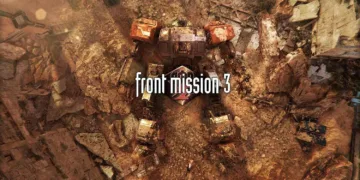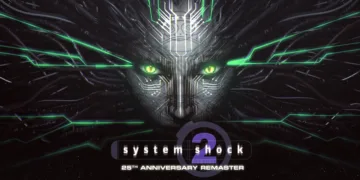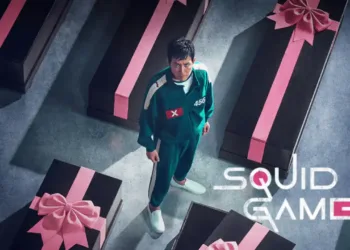This film stands as a reflective inquiry into the nature of loss and the search for emotional union after an unexpected tragedy. Centered on Eden—a young woman whose world shifts with the sudden passing of her cherished brother—the narrative examines the intimate interplay between personal sorrow and the need for connection.
The story paints a portrait of a sibling bond that once served as a sanctuary amid family discord and individual isolation (a protective pact of sorts, forged in the crucible of shared hardship).
The director, drawing from her own experiences of bereavement, injects a palpable authenticity into every frame. Her personal history with loss permeates the film, coloring its tone with a sense of both melancholy and wry humor (there is a certain dry wit in acknowledging life’s absurdities even when mourning seems inevitable).
Set against the dynamic backdrop of contemporary Israel—where Tel Aviv’s electric nightlife meets the serene allure of its beaches—the film juxtaposes modern digital expressions of emotion with a more traditional narrative style.
This mixture of stylistic techniques offers viewers a layered experience, inviting them to reflect on the nature of identity and human connection in a society marked by rapid change and enduring personal conflict.
Plot and Structure: A Chronology of Loss and Revelation
The film opens with a scene that jolts the senses—a near-miss with a hit-and-run involving Nati, who, despite his fleeting escape, ultimately meets his fate. This unexpected twist serves as a microcosm for the film’s meditation on the precarious balance between existence and oblivion (a cinematic wink at the absurdity of fate). Such a start sets the tone for a narrative that oscillates between moments of exultation and deep despair.
The narrative weaves its timeline in a manner reminiscent of a shattered mirror, each fragmented reflection representing a piece of Eden’s experience of mourning. Flashbacks surface sporadically, each serving as a counterpoint to the present, much like historical echoes that remind us of events past. The structure mimics the scattered nature of memory itself—raw and unfiltered.
Central to the plot is the shift from a celebratory birthday ritual, brimming with youthful exuberance, to the stark tragedy of Nati’s demise. This dramatic contrast functions as both a personal tragedy and a subtle commentary on societal impulses that value spectacle over substance.
As family secrets begin to unravel—most notably, the revelation of Nati’s clandestine bond with Maya—the film lays bare the hidden fissures within a seemingly tight-knit familial unit (and, by extension, within modern social constructs).
Eden’s own internal discord is mirrored in her tangled relationships with a cavalier lover, her emotionally distant parents, and the enigmatic Maya. Her oscillation between defiance and vulnerability serves as a mirror for the conflicting impulses of contemporary society, where individualism often clashes with the need for communal support.
In a particularly charged sequence, the unexpected intensity between Eden and Maya reaches a peak of emotional catharsis. Their shared reminiscences of Nati transform into a symbolic space where grief and memory intersect. The narrative, by leaving open several questions about the nature of healing, challenges viewers to ponder whether the bond between these two women represents true solace or merely an echo of what once was.
Characters in Flux: Reflections of Loss and Identity
Eden stands at the heart of the narrative, shifting from a headstrong, carefree spirit to someone visibly marked by sorrow. Her transformation is almost theatrical—her choice to wear her brother’s clothes or to seek refuge in the pulsating energy of nightlife serves as a visual metaphor for her internal upheaval (one might say these acts are a kind of sartorial soliloquy).
Eden’s oscillation between defiant nonchalance and moments of raw tenderness offers an insightful commentary on the human condition, where personal grief reshapes identity in unexpected ways.
Nati, though appearing in limited scenes, functions as an indispensable catalyst. His character is examined through the recollections of Eden and the careful revelations by Maya. The brief glimpses into Nati’s life paint him as a figure whose hidden dimensions—his secret affections and quiet depth—indirectly orchestrate the unfolding drama. His legacy persists, casting a long shadow that both haunts and informs the lives of those left behind.
Maya enters as a figure of quiet reserve, almost a stranger in Eden’s turbulent world at first glance. Over time, her initial timidity gives way to a more assertive presence. This evolution, influenced partly by her connection to Nati and then by her increasingly complex relationship with Eden, is not without its contradictions. At times, Maya seems to resist the pull of shared memories, while in other moments, she is drawn irresistibly into the orbit of lost affection.
The supporting characters contribute their own nuanced strokes to this portrait of grief. Eden’s parents, entrenched in their own battles with loss and a fractious marital history, mirror a society grappling with change. Their distant handling of grief contrasts sharply with Eden’s visceral expressions.
Likewise, Eden’s dalliance with a married man injects a note of recklessness into her personal saga, contrasting sharply with the steadier, albeit complicated, rapport developing between her and Maya. Friends and peers provide a backdrop that reflects societal attitudes toward loss and recovery (sometimes with a touch of dry humor reminiscent of life’s absurdities).
Emotional Landscapes and Thematic Resonance
The film portrays grief as an erratic, non-linear force—an unruly tide that crashes unpredictably against the shores of personal identity. Nati’s death is not merely a plot device; it is a symbol whose reverberations disrupt Eden’s world, reminding us that loss is often experienced as a cascade of small, painful moments rather than a single, defining event (think of it as a series of shockwaves rather than one massive explosion).
Characters cope with their anguish in myriad ways. Eden, for instance, seeks escape in the pulsating chaos of nightlife and fleeting indulgences—a kind of self-medicated rebellion against the void.
This behavior mirrors the historical tendency of societies to mask sorrow with distractions during turbulent periods (a survival mechanism, one might quip, albeit with a wry grin). Yet, the film also unveils a quieter, more introspective search for meaningful connection, suggesting that healing might come from shared vulnerability rather than solitary escapism.
At the core lies the interplay between different forms of love. The bond between Eden and Nati is depicted as almost symbiotic—a dynamic so deeply ingrained in her that his absence reshapes her very essence. In parallel, the unconventional closeness that develops between Eden and Maya becomes a canvas on which unresolved grief is painted, challenging conventional labels and forcing us to reconsider what it means to be emotionally intertwined.
The narrative further interrogates identity amid personal trauma. As characters struggle to redefine themselves after loss, the film situates their experiences within the modern milieu of Israeli society, marked by a clash of generations and cultural influences (imagine the friction of historical traditions with the immediacy of digital life).
Visually and sonically, recurring symbols—be it the repeated appearance of familiar garments, the evocative beachscapes, or even the curated snippets of social media—serve as metaphors for memory, absence, and longing.
Finally, the film leaves us with an uneasy ambivalence. The blurred boundaries between love, grief, and dependency provoke a tension where the desire to cling to the past collides with the need to forge ahead, raising questions that linger without neat resolution.
Visual Poetry and Sonic Storytelling
The film’s visual elements and auditory design work in concert to create an immersive cinematic experience. Its color palette, marked by vivid, hyperreal splashes in makeup and settings, transforms everyday scenes into evocative emotional landscapes (a kind of chromatic soliloquy).
The framing of Tel Aviv’s nightlife captures a frenetic energy that occasionally gives way to moments of meditative stillness—a juxtaposition that reminds one of historical snapshots where chaos meets calm.
Editing is a study in contrast. Rapid, almost jarring sequences reminiscent of digital media snippets cut sharply with lingering, reflective shots. This method of intercutting not only builds tension but also slowly reveals layers of character backstories, much like peeling back the layers of an old, forgotten photograph.
There are times when the pacing appears to experiment with rhythm, a tactic that might cause momentary dissonance in the viewer (a curious nod to modern life’s erratic tempo).
The musical score is a collage of contemporary sounds that echo the internal moods of the characters. Specific cues in the score signal shifts in emotion, bridging the gap between memory and the present with a sense of deliberate precision. Moreover, the integration of digital sound bites—voicemail messages and other media artifacts—creates a textured auditory experience that feels both current and reminiscent of a bygone era.
Directorial choices, particularly in set design and production aesthetics, underline a careful crafting of urban and intimate spaces. Each scene, whether set against the dynamic backdrop of a busy street or within a personal refuge, contributes to an overall stylistic cohesion that supports the narrative’s emotional undercurrents.
Legacy in the Wake of Grief
This film has struck a chord with audiences today, its portrayal of loss and love echoing in the minds of viewers facing similar personal trials.
The way it handles grief—as a series of unexpected, often jarring emotional events—offers a mirror to the modern experience of isolation and recovery. Its narrative style, which frequently challenges established storytelling forms by mixing rapid cuts with lingering, introspective moments, opens up a space for debates on the nature of mental health and personal resilience (one might even call this a “recovery remix”).
The cultural impact of the film is notable. It positions itself as a reflective piece on how personal tragedy can stir collective reflection within society, akin to how major historical events leave imprints on our communal psyche.
In an era where digital life frequently overshadows human connection, the film’s use of media fragments—snippets of voicemail and social media interludes—casts a spotlight on our modern modes of communication. These elements not only serve as narrative devices but also invite viewers to reconsider the value of genuine emotional exchange.
From an artistic standpoint, the film sets a fresh benchmark for first-time features. Its experimental approach to character and relationship dynamics has the potential to inspire emerging filmmakers who are ready to mine personal history for universal insights. Its capacity to provoke conversation about the interplay between inner healing and external reality transforms it into a silent catalyst for broader societal discussions on grief and identity.
In questioning whether emotional recovery is a destination or an endless process, the film leaves its audience with a series of unresolved questions that mirror the unpredictability of life itself.
The Review
Come Closer
Come Closer stands as a thoughtful exploration of loss, identity, and the interplay of personal grief with modern life. Its visual audacity and emotional intricacy invite both aesthetic admiration and reflective introspection.
PROS
- Powerful performances from the lead actors
- Innovative editing and sound design
- Bold exploration of grief and identity
CONS
- Occasional overindulgence in symbolism
- Overly ambiguous narrative at times




















































